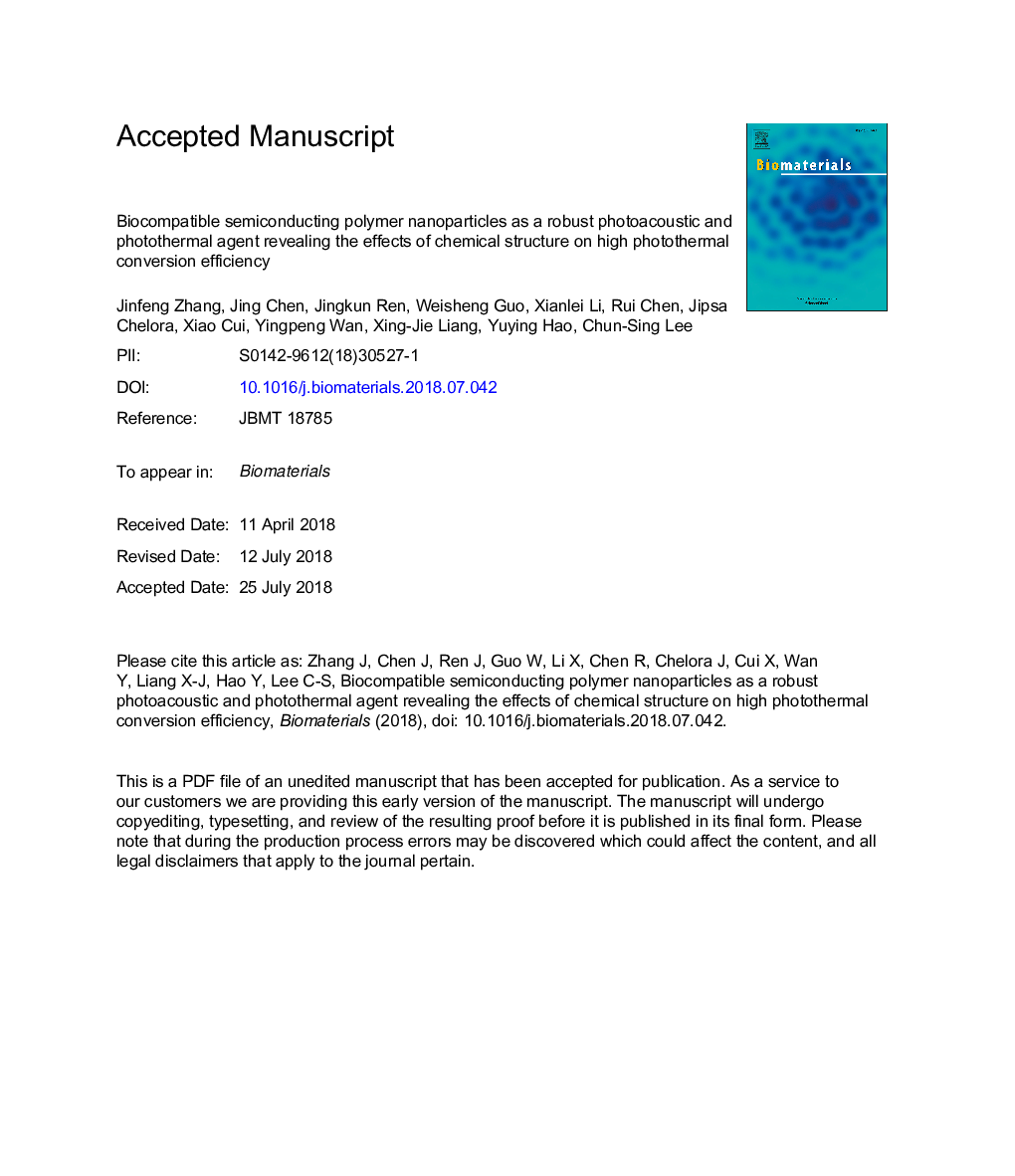| Article ID | Journal | Published Year | Pages | File Type |
|---|---|---|---|---|
| 6484313 | Biomaterials | 2018 | 34 Pages |
Abstract
Understanding the relationship between polymer chemical structure and its performance of photoacoustic imaging (PAI) and photothermal therapy (PTT) is important for developing ideal PAI/PTT agents. In this report, four semiconducting polymer nanoparticles (SPNs) with different donor-acceptor architectures are self-assembled for highly effective PAI-guided PTT. In particular, SPN1 with the longest Ï-conjugation length and the highest mass extinction coefficient which are beneficial for intramolecular charge transfer as well as light harvesting, exhibits the highest photothermal conversion efficiency up to 52.6%. Moreover, the as-prepared SPN1 possess good water-dispersibility, robust size-stability and excellent photothermal properties. Furthermore, the SPN1 not only exhibits a remarkable cancer cell-killing ability but also shows a prominent tumor inhibition capacity. Finally, the as-prepared water-dispersible SPN1 displays good biocompatibility and biosafety, making it a promising candidate for future biomedical applications. Considering the plenty of near-infrared absorbing semiconducting polymer available, our work provides fundamental insights for rational design and preparation of highly efficient SPN-based PAI/PTT agents for cancer theranostics.
Keywords
Related Topics
Physical Sciences and Engineering
Chemical Engineering
Bioengineering
Authors
Jinfeng Zhang, Jing Chen, Jingkun Ren, Weisheng Guo, Xianlei Li, Rui Chen, Jipsa Chelora, Xiao Cui, Yingpeng Wan, Xing-Jie Liang, Yuying Hao, Chun-Sing Lee,
